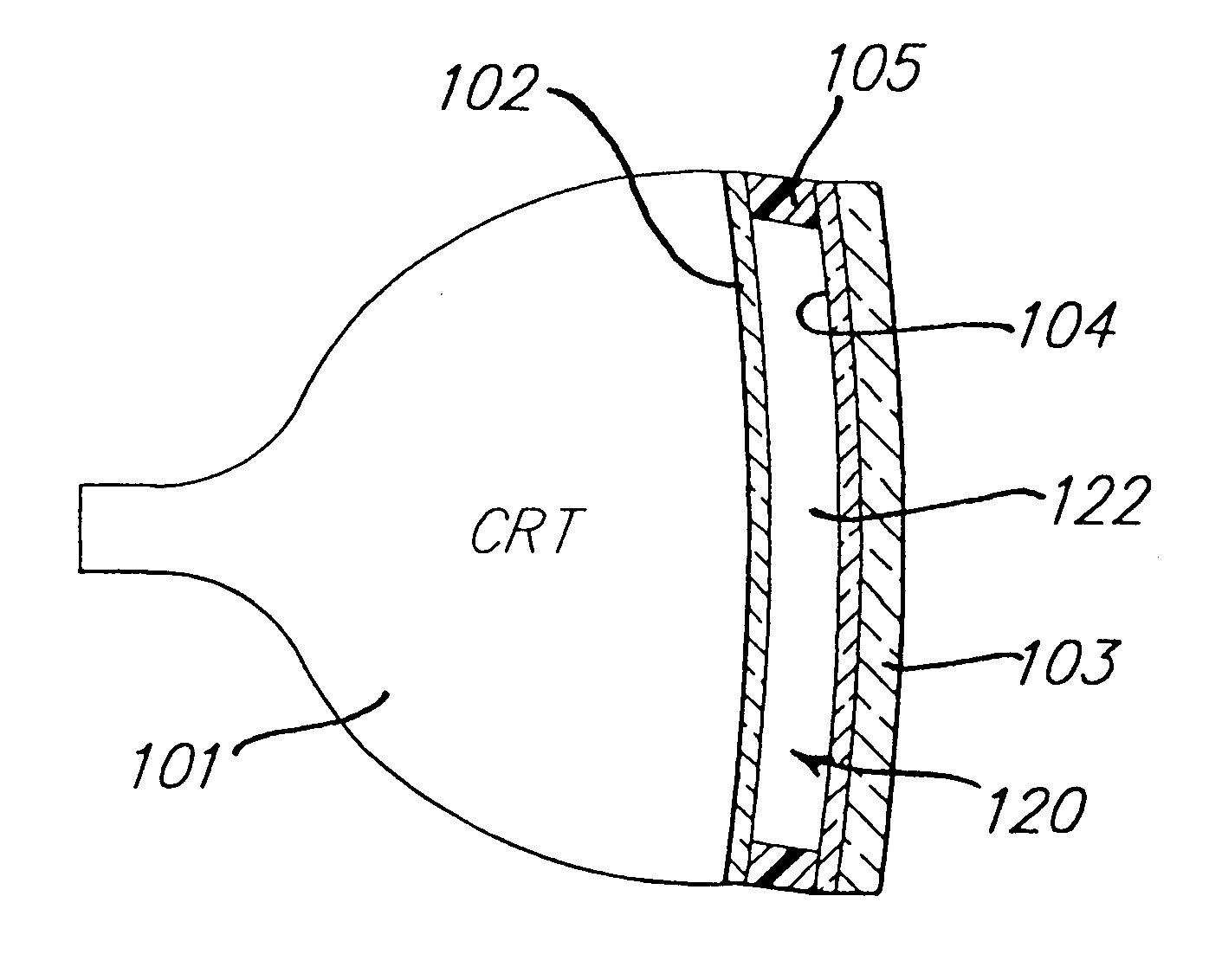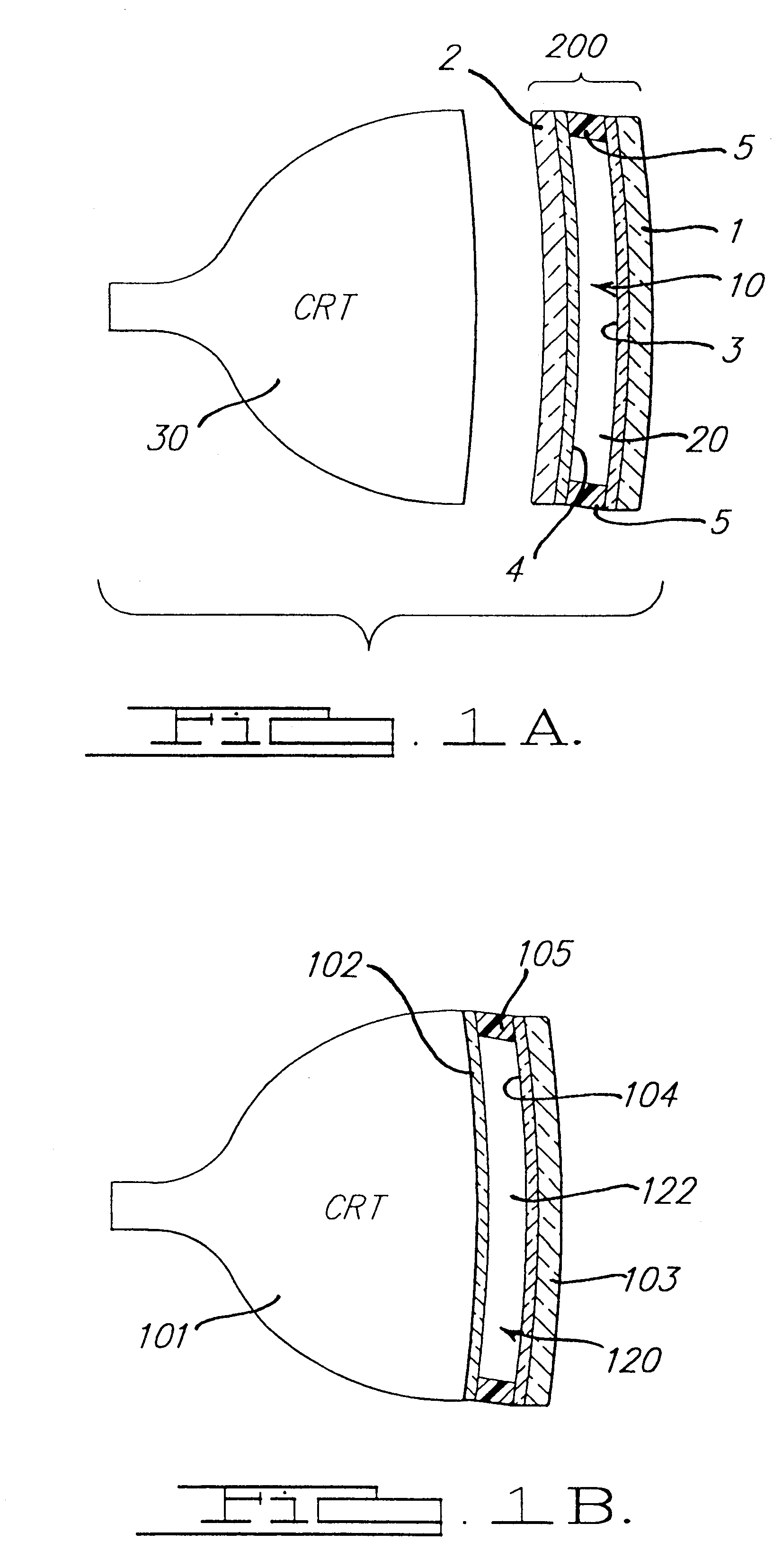Electrochromic media for producing a preselected color and devices comprising same
a technology of electrochromic media and preselected color, which is applied in the direction of organic chemistry, instruments, chemistry apparatus and processes, etc., can solve the problems of inability to acceptably produce gray shades, change of light reflectance of mirrors, and limited colors obtainable to date, so as to achieve the effect of contributing to the spectrum of mediums and higher relative proportions
- Summary
- Abstract
- Description
- Claims
- Application Information
AI Technical Summary
Benefits of technology
Problems solved by technology
Method used
Image
Examples
example 1
20 mM 5,10-dimethyl-5,10-dihydrophenazine, 8 mM 2,3-diphenyl-5,10-diethyl-5,10-dihydrophenazine (28.6 mol percent), 34 mM 1,1'-bisphenyl-4,4'-dipyridinium bis(tetra-fluoroborate).
Application of 1.2V across each of the electrochromic devices results in uniform coloration. The device containing electrochromic medium C1 changes from light yellow to bright green, while the device containing electrochromic medium 1 changes from light tan to dull grayish-green. There is no staging noticed during darkening or clearing.
example 2
20 mM 2-vinyl-5,10-dimethyl-5,10-dihydrophenazine, 8 mM 2,3-diphenyl-5,10-diethyl-5,10-dihydrophenazine (28.6 mol percent), 34 mM 1,1'-ethylene-4,4'-dimethyl-2,2'-dipyridinium bis(hexafluorophosphate)
Application of 1.2V across each of the electrochromic devices results in uniform coloration. The device containing electrochromic medium C2 changes from light yellow to dull yellow-tan, while the device containing electrochromic medium 2 changes from light yellow to rust-orange. There is no staging noticed during darkening or clearing.
example 3
An electrochromic medium containing a electrochromic compound composition consisting of 22 mM 5,10-dimethyl-5,10-dlihydrophenazine, 6 mM 1 2-methyl-3-phenyl-5,10-dimethyl-5,10-dihydrophenazine (21 mol percent), and 34 mM 1,1'-bis(phenylpropyl)-4,4'-dipyridinium bis(tetrafluoroborate) in propylene carbonate is deoxygenated with dry nitrogen.
Application of 1.2V across the electrochromic device containing the electrochromic medium of Example 3 results in uniform coloration. The device changes from colorless to blue-gray. There is no staging noticed during darkening or clearing.
PUM
| Property | Measurement | Unit |
|---|---|---|
| electrically conductive | aaaaa | aaaaa |
| electrochromic | aaaaa | aaaaa |
| cathodic electrochromic | aaaaa | aaaaa |
Abstract
Description
Claims
Application Information
 Login to View More
Login to View More - R&D
- Intellectual Property
- Life Sciences
- Materials
- Tech Scout
- Unparalleled Data Quality
- Higher Quality Content
- 60% Fewer Hallucinations
Browse by: Latest US Patents, China's latest patents, Technical Efficacy Thesaurus, Application Domain, Technology Topic, Popular Technical Reports.
© 2025 PatSnap. All rights reserved.Legal|Privacy policy|Modern Slavery Act Transparency Statement|Sitemap|About US| Contact US: help@patsnap.com



